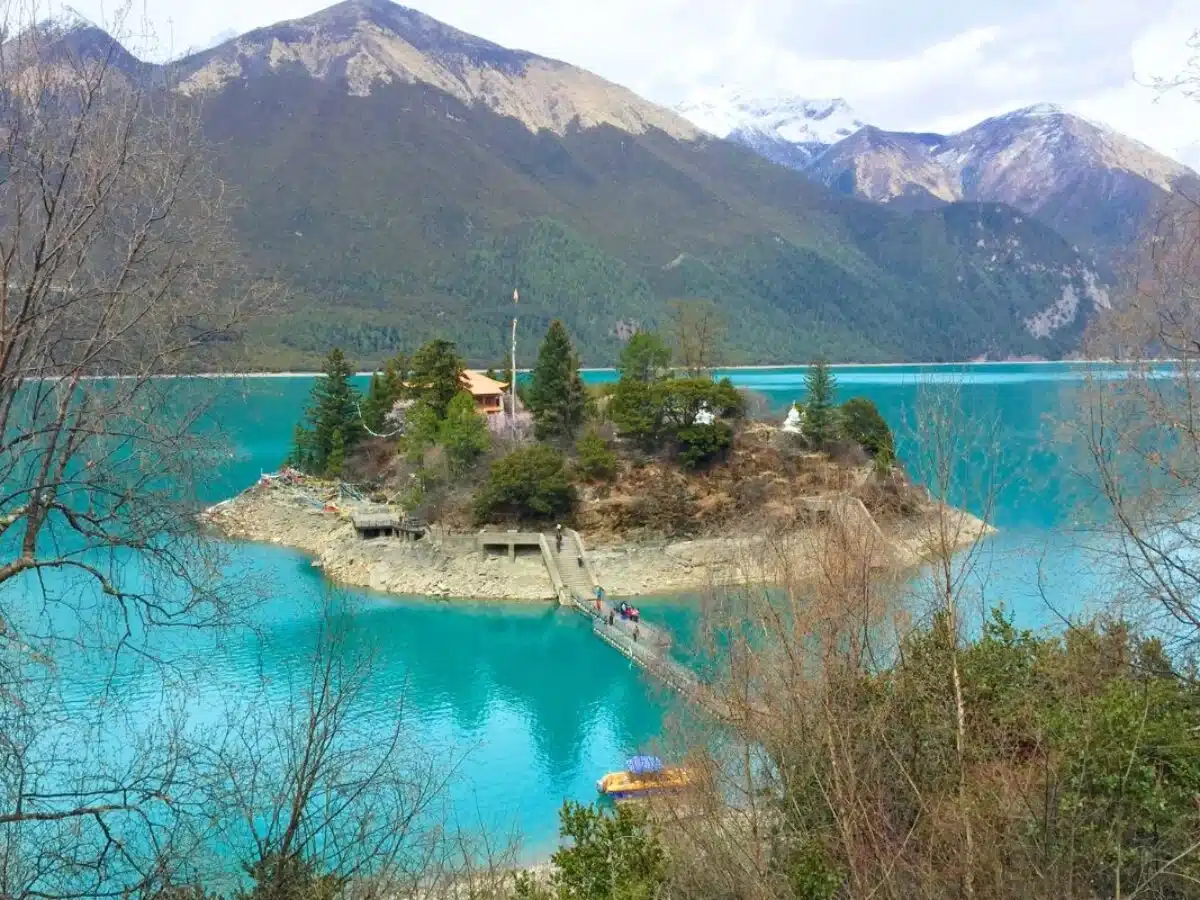China has officially begun construction of a $167.8 billion hydropower project on the Brahmaputra River (Yarlung Tsangpo), making headlines around the globe. This colossal undertaking will see a vast dam rise on the Tibetan plateau, near the Indian border with Arunachal Pradesh. Announced by Premier Li Qiang in Nyingchi city, the plan includes five cascading power stations designed to generate an astonishing 60,000 megawatts of electricity each year—surpassing even China’s Three Gorges Dam. While the government celebrates this milestone as a technological marvel, many in Tibet and neighboring countries remain apprehensive about its broader consequences.
What sets china’s largest hydroelectric dam project apart?
This project stands out due to its unprecedented scale and ambitious engineering vision. Never before has such a massive infrastructure effort been attempted at these high-altitude river systems. The five cascade power stations are positioned along the upper Yarlung Tsangpo, aiming not just to meet China’s energy demands but to set a new global benchmark in electricity generation output.
With a combined capacity expected to supply power for over 300 million people annually, this initiative easily surpasses previous records. In comparison to the renowned Three Gorges Dam, these new stations would take the top spot for both size and energy production, further highlighting China’s growing ambitions in renewable energy infrastructure.
Why is the project located near the Himalayan border stirring controversy?
Constructing such an extensive development in Tibet, especially close to one of Asia’s most sensitive borders, has triggered heated debates. Chinese authorities emphasize potential benefits like increased renewable energy and regional economic growth, yet many residents in and around Tibet express deep concerns. Issues such as displacement, cultural disruption, and questions about who truly profits from local resources are at the forefront of local worries.
The dam’s location near a tectonic plate boundary also amplifies earthquake risks. A project of this magnitude faces unique challenges from the area’s geography and seismic activity. These risks are felt not only in Tibetan communities but also downstream in India and Bangladesh, where the effects could be far-reaching.
Main features and technical ambitions
The true ambition behind this world’s largest infrastructure project is evident in every detail. Engineers have tackled immense logistical obstacles posed by the volatile landscape and remote conditions. Each phase, from design to future power transmission, required innovative solutions that depart from conventional methods.
- Five cascading hydropower stations constructed sequentially along the lower Yarlung Tsangpo
- Targeted annual electricity generation output: 60,000 megawatts, enough to power entire provinces
- Reinforced dam structures engineered to withstand floods and seismic threats unique to the Tibetan plateau
- Comprehensive environmental management plans addressing river flow, fish migration, and sediment control
By concentrating multiple stations within the gorge, designers hope to maximize the dramatic elevation changes while limiting the total reservoir footprint. The electricity generated will support China’s growing needs and connect western regions with major industrial centers in the east.
Concerns from india and bangladesh: geopolitical tensions and downstream anxiety
As news spread about china’s largest hydropower dam project moving forward upstream, attention swiftly shifted to regional politics. For those living downstream—in India’s Arunachal Pradesh and across Bangladesh—the stakes are immediate and significant.
The main concern revolves around water flow disruptions. Both nations depend heavily on the Brahmaputra for agriculture, drinking water, fisheries, and everyday life. Any alteration could reduce flows during dry seasons or increase flood risk when river levels rise. This unpredictability presents ongoing challenges for millions whose lives revolve around the river.
How do officials articulate their apprehensions?
India’s foreign ministry has called upon China to ensure that actions on the Brahmaputra do not negatively impact lower riparian countries. Political leaders and environmental advocates echo these warnings, highlighting dangers to food security, ecosystem stability, and public safety if unintended consequences emerge.
Pema Khandu, chief minister of Arunachal Pradesh, has cautioned about the possibility of the dam being used as a strategic tool—potentially influencing water release as leverage in regional disputes. Such statements underscore long-standing mistrust between neighbors regarding shared water resources.
Bangladesh’s position and related fears
In Bangladesh, where the Brahmaputra empties into the expansive delta, anxieties run high. Reduced seasonal runoff could disrupt rice farming and fisheries, while sudden releases during heavy rains could lead to catastrophic flooding in low-lying areas.
Environmentalists in Bangladesh advocate for greater transparency and direct negotiations before irreversible changes affect the river’s course. Calls for trilateral consultations involving all stakeholders continue to grow alongside progress on the Tibetan plateau.
Environmental impact on tibet and the wider region
The planned five cascading dams will inevitably reshape more than just energy statistics. Hydroelectric projects of this size leave lasting marks on landscapes, ecosystems, and nearby communities. On the steep, fragile slopes of the Tibetan plateau, these pressures become even more pronounced.
Wildlife corridors, migratory bird routes, and aquatic habitats face disruption. Changes in sediment transport can alter riverbank fertility and biodiversity downstream. Many observers argue that mitigation efforts may prove insufficient given the sheer scale of this endeavor.
Earthquake risks and engineering strategies
Building enormous concrete barriers in seismically active zones requires advanced engineering. The site sits just north of two converging tectonic plates, raising the likelihood of strong tremors that could threaten dam integrity or trigger landslides.
Although engineers tout shock-absorbing materials and robust community response systems, skepticism persists among scientists and disaster management experts throughout the region.
Balancing national ambition with shared river stewardship
China frames its $167.8 billion investment as a leap toward modernization and carbon reduction. Yet calls for collaboration with India and Bangladesh are growing louder. Addressing tensions over water rights and ecological sustainability remains central to future discussions.
One way forward involves cross-border monitoring teams, joint emergency protocols, and transparent sharing of hydrological data. These steps aim to ease suspicions and minimize misunderstandings that could escalate diplomatic disputes.
- Collaborative water management agreements
- Shared early-warning systems for floods or shortages
- Transparent release schedules for dam operations
The world will be watching closely as china’s largest hydroelectric dam project takes shape on the storied Yarlung Tsangpo. How downstream neighbors and international observers respond will help determine whether this massive energy bet becomes a model for responsible cooperation—or a source of enduring tension—in the years ahead.







